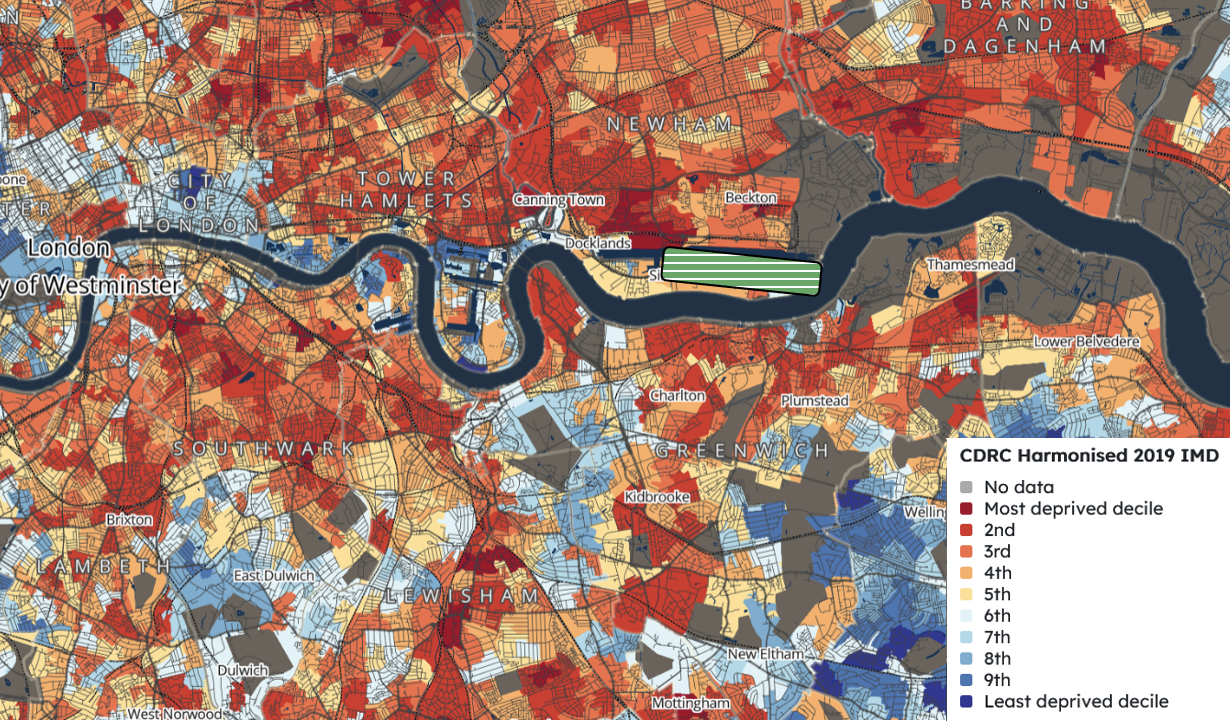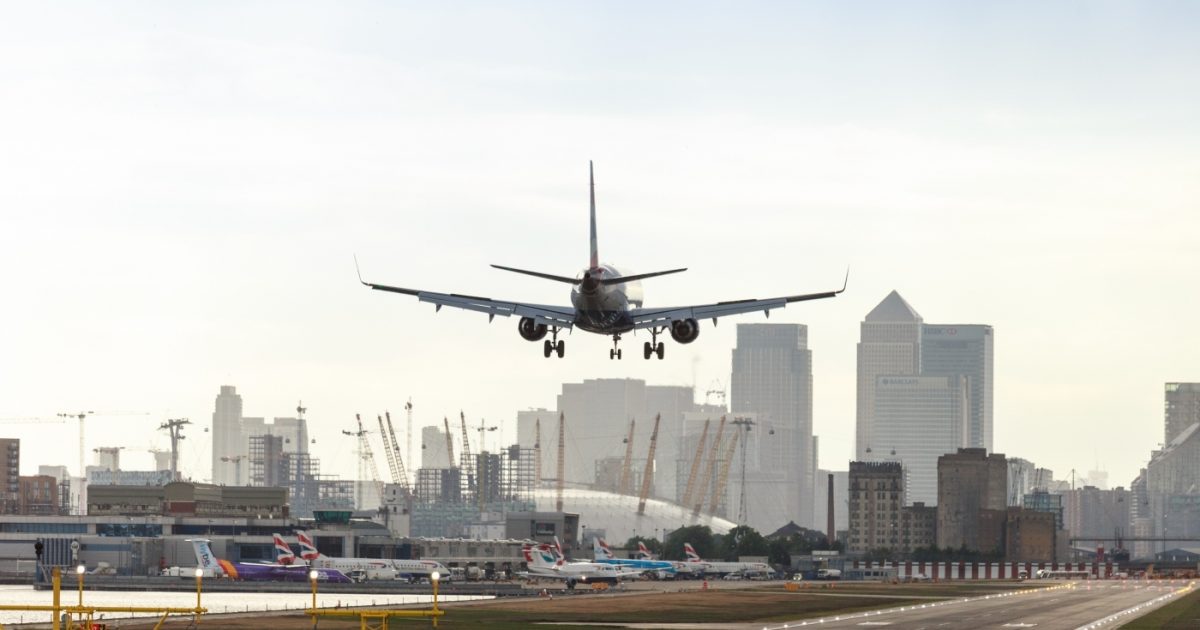Approval of the extension would send the wrong signal for the new planning approach
In her first speech as Chancellor, Rachel Reeves laid out plans for a “growth-oriented approach to the planning system”, the “Bureaucracy” reduced to “Get Britain building.’ Few would dispute that we need to get moving on building new homes and infrastructure. But the national renewal that the new government is seeking will not be achieved by simply approving any building project.
One of the first proposals from the new government is London City Airport’s request to significantly increase its flight numbers. The London Borough of Newham rejected the request, but the airport has appealed the decision. The final decision now rests with Angela Rayner, the new Secretary of State for Local Government, in the first test of the new government’s priorities. Not only is the proposal unlikely to boost economic growth, it is a terrible proposal on a whole range of social justice and environmental grounds. In fact, the proposal directly contradicts the recommendations of the UK’s Climate Change Committee (CCC), which the last government dangerously ignored.
As an expert witness in the planning inquiry that heard the airport’s appeal, I have followed this application for a number of years and have now summarised the key points about the proposed expansion of London City Airport, based on a new analysis of data from the Civil Aviation Authority (CAA).
What is proposed?
London City Airport has applied to increase its capacity by 2.5 million additional passengers per year. After the collapse in business aviation as a result of the pandemic, the airport is now trying to capture the leisure travel market. To achieve this, the airport is asking the government to lift a current restriction on flights departing on Saturday afternoons and increase the number of flights departing before 7am on weekdays. The restrictions requested by the airport have been introduced to protect the wellbeing of local residents and, in particular, to give them a respite from constant noise pollution.
Who benefits?
A new analysis of the CAA passenger survey by NEF and Possible shows exactly who benefits from London City Airport’s expansion: frequent flyers. In fact, it is the UK’s most popular airport for frequent and ultra-frequent flyers. In 2019, an estimated 43% of seats were occupied by passengers who fly at least every two months (so six or more return flights per year). Unsurprisingly, this means the airport serves wealthier travellers. CAA data suggests that the median household income of private passengers at London City Airport is typically around 34% higher than that of the average UK air passenger.
The climate costs
The CCC’s objections to the airport expansion are understandable. It is estimated that this project will release around 230,000 tonnes of carbon equivalents into the atmosphere every year by 2050.(i) That is equivalent to around 165,000 additional cars on our roads every year. But the detail shows how wasteful these emissions are.
London City Airport is a short-haul airport. New NEF analysis shows that in 2019, 33% of passengers departing from the airport used routes that can be reached by just one train. Key destinations include Edinburgh, Amsterdam, Glasgow and Rotterdam, all of which can be reached by a direct train from London. A further 31% of passengers travel to destinations that can be reached by just one train connection. These include Frankfurt, Düsseldorf, Geneva, Zurich and Milan. There are plans to serve some of these destinations by direct train in the future.
In total, 64% of passenger journeys from London City Airport in 2019 could have been made with two trains or less. NEF analysis suggests that flights on these routes emitted almost 450,000 tonnes of CO2 equivalents. That means a total of 900,000 tonnes of CO2 equivalents if we include return flights.
Not only does London City Airport serve a number of destinations that are easily accessible by rail, it also uses some of the least efficient aircraft (per passenger) to do so. During the planning investigation, London City Airport’s consultants acknowledged that the airport’s smaller aircraft meant that its CO2 emissions per passenger were around 60% higher than other London airports (on the same routes).(ii)
Damage to the local environment
London City Airport’s location means that aircraft arrive and depart over densely populated urban areas, particularly Newham, Lewisham, Tower Hamlets and Southwark. These areas are some of the UK’s poorest communities, as shown by the Government’s Index of Multiple Deprivation (see map below). This results in noise pollution for hundreds of thousands of local residents. A key aim of the current motion is to remove a Saturday afternoon quiet period. When Newham Borough first heard the motion, hundreds of local residents submitted moving personal objections describing how the loss of the quiet period would affect their mental health and wellbeing.(iii) Understandably, because allowing the proposed motion would result in a significant worsening of noise pollution for at least 200,000 people – according to analysis by the airport’s consultants.(iv) But this is likely to be a significant underestimate. A survey carried out by local residents and led by Dr. A citizen science study reviewed by Christian Nold of the Open University found very significant noise pollution in areas not properly monitored by the airport.(v)
Residents will not only have to contend with the damaging effects of noise pollution on their bodies and minds, but also with a deterioration in air quality. Recent research from Transport and Environment highlights that the health effects of “The ultrafine particles released by aircraft could have much worse health effects than previously thought.
Map 1: Disadvantage around London City Airport
Index of multiple deprivation showing local areas from the most deprived (red) to the least deprived (navy blue) near London City Airport (green box).

Source: Consumer Data Research Centre, 2024
The economic impact
In the past, London City Airport served primarily business travellers. But as a recent analysis by the NEF showed, business use of air travel has plummeted since the pandemic and numbers are well below their historic peak in 2006. Now the airport is trying to enter the leisure travel market.
The problem is that the increase in leisure travel is not particularly beneficial to the economy. The NEF’s review of academic research last year found that only growth in the number of air passengers travelling for business is driving up traditional economic indicators such as GDP. This is because while there is a benefit from incoming holidaymakers, this benefit is more than offset by the spending lost by departing tourists. Our analysis shows that at London City Airport in 2022, for every two tourists who arrived in London through the airport, three departed. While some of this spending may flow back, it does not flow back into the communities it came from through routes such as foreign direct investment (FDI). Instead, it can be used to transfer UK businesses, debt and property into foreign ownership.
While more flights at potentially lower prices actually make flying more affordable for lower income households, most of the new seats created by airport expansions will be taken up by higher income frequent flyers. These groups, who have disposable income, respond to the price signals presented to them (signals that are also amplified by the lack of fair taxation of the environmental impacts of air travel). Given that we already have very cheap flights and capacity for around 300 million passenger movements per year, the social benefit of further expansion is small compared to the threat of the climate crisis. The climate and communities like those living around the airport in east London have been miserably failed for decades and must not become victims of a misguided growth spurt.
Notes
(i) A multiplier of 3.0 shall be applied to carbon dioxide emissions to reflect the most recent scientific estimate of the climate impacts of emissions other than carbon dioxide.
(ii)York Aviation (2024) Louise Congdon Carbon and Noise Costs Inquiry Note. Document reference: INQ-29. London City Airport Planning Appeal, Appeal reference: APP/G5750/W/23/3326646
(iii) See application 22/03045/VAR on the Newham Planning Portal
(iv) See evidence of Richard Greer in the appeal at London City Airport
(v) Nold, C. (2024) Evidence of Dr Christian Nold. Document reference: HACAN‑3.1. London City Airport Planning Appeal, Appeal reference: APP/G5750/W/23/3326646
Passengers and proportion of passengers at London City Airport on routes accessible by train in less than 5, 6 and 8 hours.
|
Total time on the train(s)* |
Passenger numbers (2023) |
Share of the city airport’s total passenger numbers |
|
Under 5h |
1,502,000 |
43.7% |
|
Under 6h |
1,857,000 |
54.1% |
|
Under 8h |
2,274,000 |
66.2% |
*without transfer times
|
Goal |
Passengers |
Changes |
Share of total number of airport passengers |
Total time on the train(s)* |
|
ROTTERDAM |
136,175 |
1 |
4.0% |
3 hrs 30 mins |
|
AMSTERDAM |
518,191 |
1 |
15.1% |
4 hours |
|
EDINBURGH |
342,810 |
1 |
10.0% |
4 hrs 20 mins |
|
GLASGOW |
208,629 |
1 |
6.1% |
4 hours 30 minutes |
|
LUXEMBOURG |
167,997 |
2 |
4.9% |
4 hours 30 minutes |
|
DUSSELDORF |
128,443 |
2 |
3.7% |
4 hours 50 minutes |
|
FRANKFURT |
250,450 |
2 |
7.3% |
5 hrs 45 mins |
|
GENEVA |
104,732 |
2 |
3.0% |
5 hrs 30 mins |
|
PRETTY |
61,539 |
2 |
1.8% |
7 hrs 50 mins |
|
ZURICH |
355,071 |
2 |
10.3% |
7 hrs 40 mins |
|
MILAN |
100,673 |
2 |
2.9% |
8 hrs 40 mins |
*without transfer times
Image: iStock

